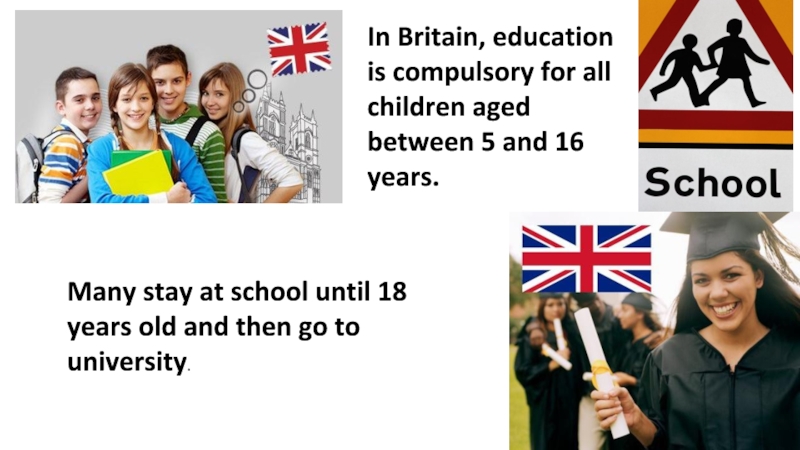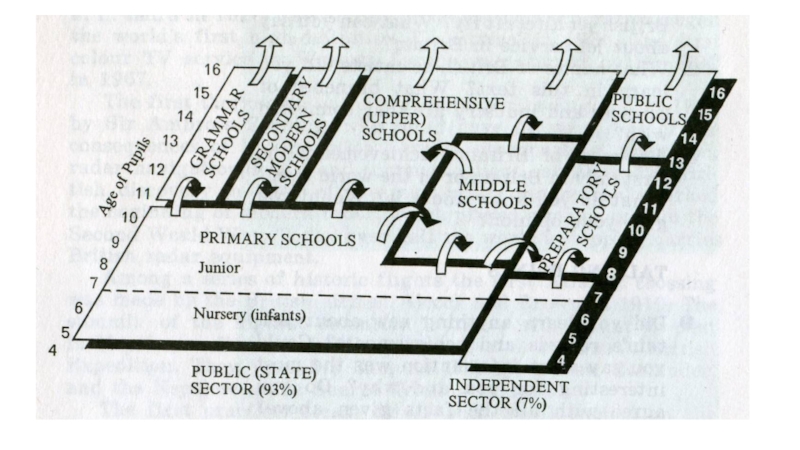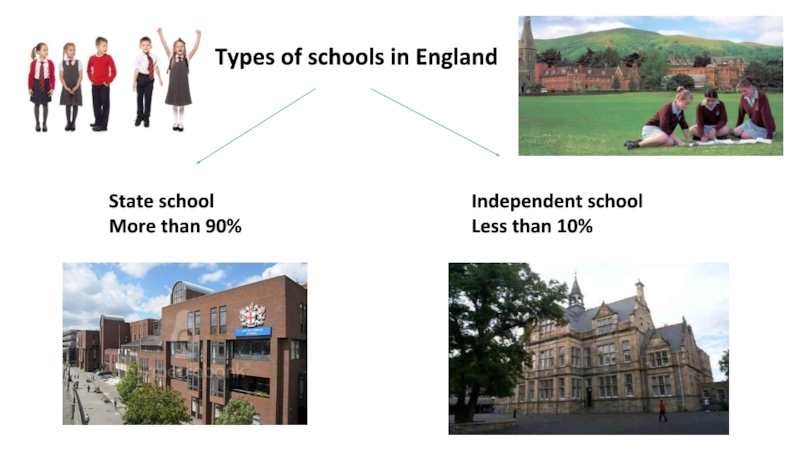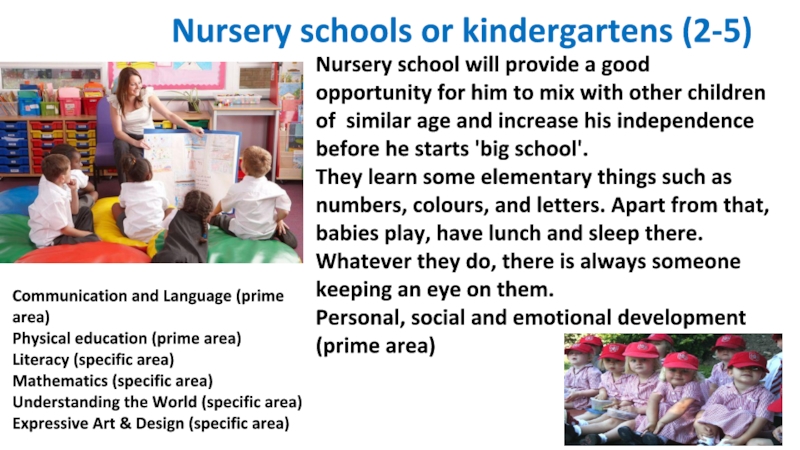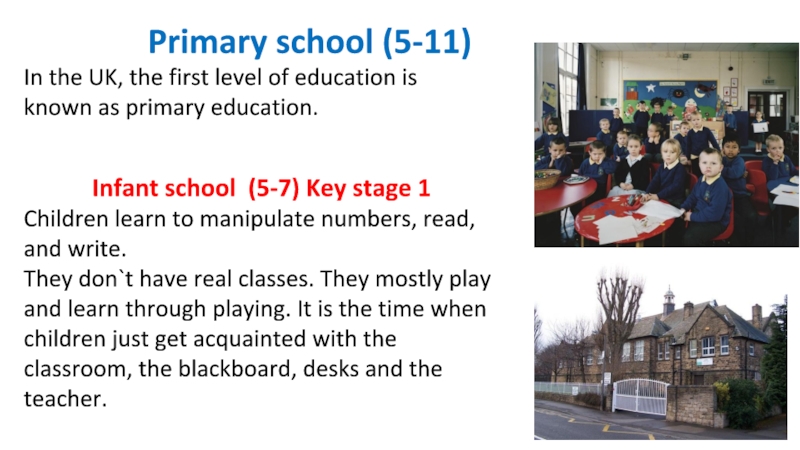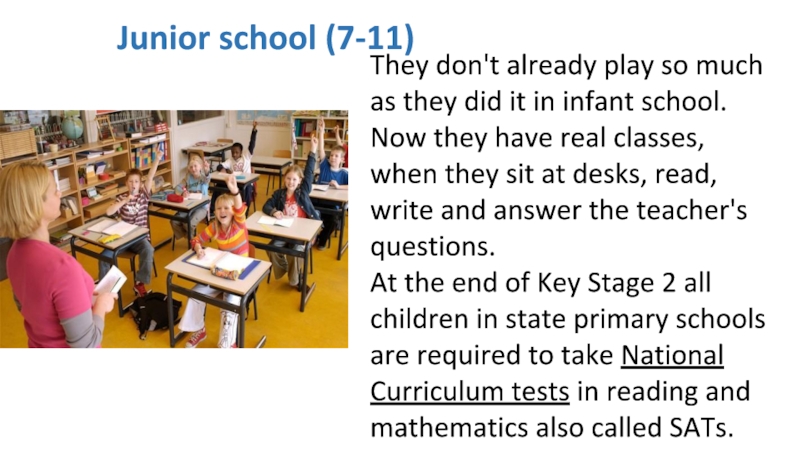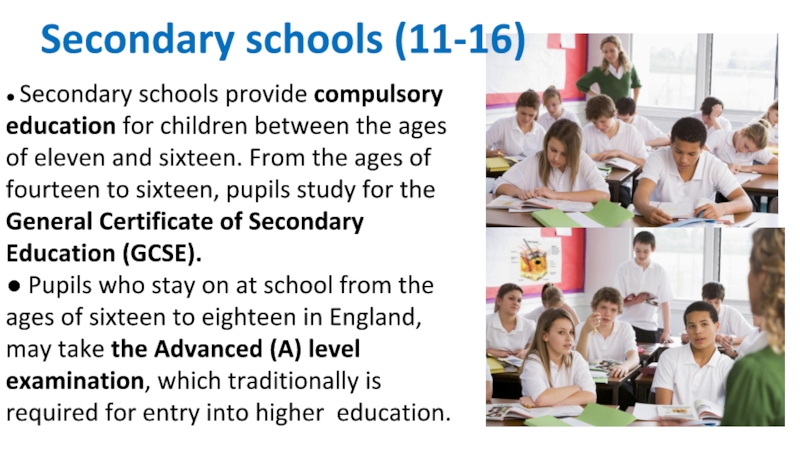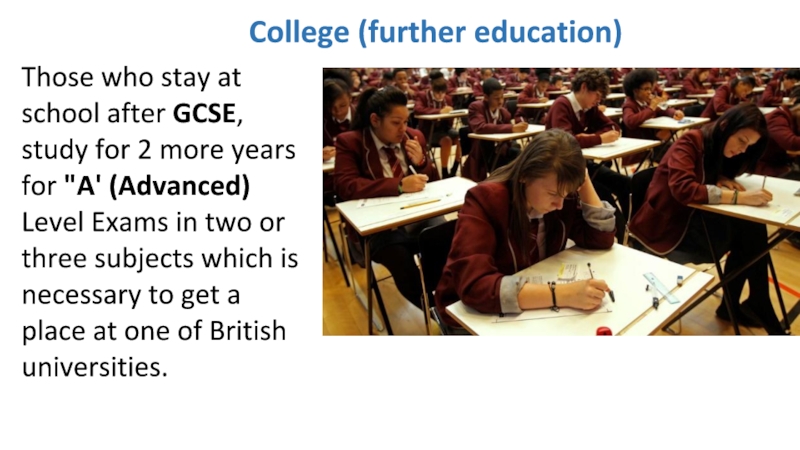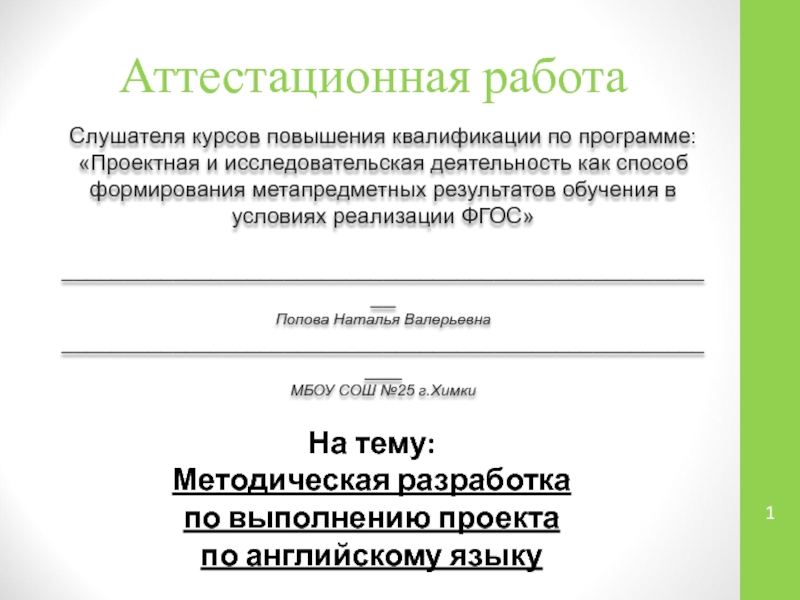In Britain, education is compulsory for all children aged between 5 and 16 years.
- Главная
- Разное
- Дизайн
- Бизнес и предпринимательство
- Аналитика
- Образование
- Развлечения
- Красота и здоровье
- Финансы
- Государство
- Путешествия
- Спорт
- Недвижимость
- Армия
- Графика
- Культурология
- Еда и кулинария
- Лингвистика
- Английский язык
- Астрономия
- Алгебра
- Биология
- География
- Детские презентации
- Информатика
- История
- Литература
- Маркетинг
- Математика
- Медицина
- Менеджмент
- Музыка
- МХК
- Немецкий язык
- ОБЖ
- Обществознание
- Окружающий мир
- Педагогика
- Русский язык
- Технология
- Физика
- Философия
- Химия
- Шаблоны, картинки для презентаций
- Экология
- Экономика
- Юриспруденция
Education in Britain презентация
Содержание
- 2. Many stay at school until 18 years
- 4. Types of schools in England State school More than 90% Independent school Less than 10%
- 5. Nursery schools or kindergartens (2-5) Nursery
- 6. Primary school (5-11) In the UK, the
- 7. Junior school (7-11) They don't already
- 8. ● Secondary schools provide compulsory education for
- 9. Grammar school This type of school gives
- 10. Modern and technical school. Secondary modern
- 11. College (further education) Those who stay at
Слайд 2Many stay at school until 18 years old and then go
Слайд 5Nursery schools or kindergartens (2-5)
Nursery school will provide a good opportunity
They learn some elementary things such as numbers, colours, and letters. Apart from that, babies play, have lunch and sleep there. Whatever they do, there is always someone keeping an eye on them.
Personal, social and emotional development (prime area)
Communication and Language (prime area)
Physical education (prime area)
Literacy (specific area)
Mathematics (specific area)
Understanding the World (specific area)
Expressive Art & Design (specific area)
Слайд 6Primary school (5-11)
In the UK, the first level of education is
Infant school (5-7) Key stage 1
Children learn to manipulate numbers, read, and write.
They don`t have real classes. They mostly play and learn through playing. It is the time when children just get acquainted with the classroom, the blackboard, desks and the teacher.
Слайд 7Junior school (7-11)
They don't already play so much as they did
At the end of Key Stage 2 all children in state primary schools are required to take National Curriculum tests in reading and mathematics also called SATs.
Слайд 8● Secondary schools provide compulsory education for children between the ages
● Pupils who stay on at school from the ages of sixteen to eighteen in England, may take the Advanced (A) level examination, which traditionally is required for entry into higher education.
Secondary schools (11-16)
Слайд 9Grammar school
This type of school gives secondary education of a very
There are 164 grammar schools in England. There are no grammar schools in Wales and Scotland.

